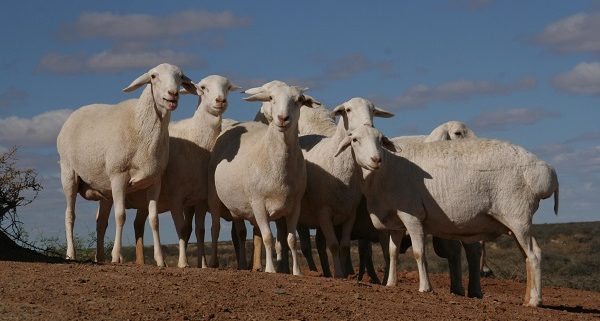Bluetongue in sheep – African Farming
Bluetongue is one of the most economically important diseases in sheep, especially in nonindigenous wool and mutton breeds. It is a notifiable disease in terms of the South African Animal Diseases Act, Act 35 of 1984. This means outbreaks of bluetongue have to be reported to veterinary authourities, even if there is only a suspicion of the disease.
WHAT IS BLUETONGUE?
Bluetongue is a non-contagious disease of ruminants, clinically occurring mainly in sheep, although goats occasionally suffer mild symptoms too. Cattle rarely show signs of the disease but may play a key role as reservoir hosts in an environment where there are susceptible sheep populations.
WHAT CAUSES IT?
The disease is caused by the bluetongue virus (BTV), which is transmitted mainly by biting midges from one animal to another. The virus is closely related to the African horse sickness virus, which causes a devastating disease in horses. Transmission of BTV can also occur when infected animals share needles with uninfected animals, for example during vaccinations.
Venereal transmission through viruscontaminated semen during certain stages of the disease and through oral ingestion of contaminated placental or foetal material have also been reported.
HOW TO RECOGNISE BLUETONGUE
The signs of the disease include swelling of the tongue, which may become blue; fever; excessive salivation; depression; and difficulty breathing. Affected animals may also have a nasal discharge, and reddened and ulcerated muzzles, lips and ears. The lips and tongue may be very swollen, causing the tongue to stick out from the mouth.
WHY SHOULD I BE CONCERNED AS A FARMER?
The disease can cause production losses in flocks. For example, the oral sores and ulcers may interfere with feeding and make the animals vulnerable to secondary opportunistic infections that result in death. Painful hooves and resultant lameness might make animals reluctant to move and limit their access to feed and water, leading to a further compromise in their health.
Reproductive problems in rams may include interference with their breeding soundness. They may be reluctant to mount, over and above the negative impact on their fertility. In pregnant ewes, especially those infected earlier on in pregnancy, foetal malformations, stillbirths and even abortions may occur. All of these are setbacks for the farmer.
The costs of treating secondary infections and associated supportive therapy, additional feeding, extra man hours allocated to caring for the sick, and so forth, have a negative financial impact on any farming operation.
The situation is further aggravated by the failure of these animals to recover, and deaths may occur even after the animals have been treated. As for international trade, certain ruminant trade restrictions can be costly to a livestock economy, especially in countries that rely heavily on livestock trade.
HOW DO I PREVENT IT?
Even though not every disease solution comes packaged in a bottle of medicine, regular vaccination still plays a significant role in the prevention of the disease. Key remains maintaining high levels of immunity in the flock to fight infection, should animals come across it.
OBP’s freeze-dried polyvalent bluetongue vaccine (reg. no. G0358) is the only registered vaccine in South Africa and Namibia for immunisation of sheep against the disease.
It comes as a series of three separate injections with different serotypes of the bluetongue virus in each bottle (bottles A, B and C). The different bottles, starting with A, B and C must be used in the same order with an interval of no less than three weeks between each. It is recommended that vaccination is carried out from August to October every year, to ensure the animals have built up sufficient immunity before the rainy season starts.
Other prevention methods include minimising animals’ exposure to the pathogen during high-risk periods. This can either be in the form of regularly applying insecticides to protect animals from biting insects or moving animals away from areas of high vector activity during certain times of the day.
A good example of this intervention may include moving animals to high-lying areas on the property or even locking them up in insect-proof accommodation during dusk until dawn. Where possible animals must also be moved from low-lying areas in vleis and next to rivers, dams, and pans.
Speak to your local veterinarian or animal health technician regarding customised vaccination programs that can help make a difference in your operation.
Another valuable resource is the Ruminant Veterinary Association website (www.ruvasa.co.za), where various veterinary practices throughout the country voluntarily report diseases that they encounter out in the field as they carry out their duties. And always read the accompanying package inserts on all vaccines (and other medicines in general).
Wishing everyone in the farming community a prosperous 2022.
Dr. Sello Maboe is the technical and marketing manager at Onderstepoort Biological Products. Email him at sello.maboe@obpvaccines.co.za.




Leave a Reply
Want to join the discussion?Feel free to contribute!